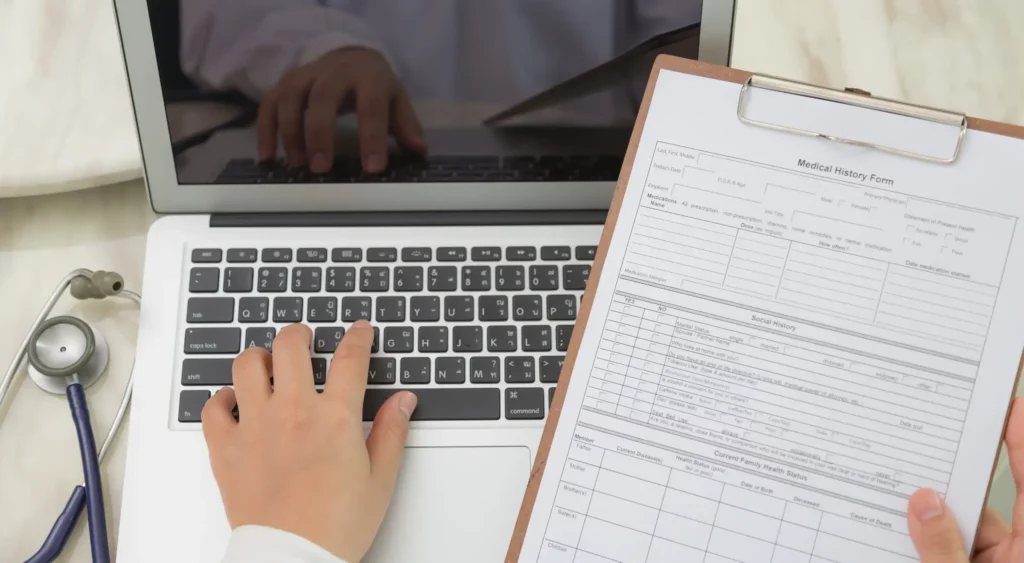What are the Billing Code and Guidelines for Transitional Care Management (TCM)?

Among the most daunting tasks for healthcare providers is mastering the billing codes and guidelines for Transitional Care Management (TCM).
With the risk of claim denials and the pressure of compliance, the need for precision in TCM billing is more critical than ever. This blog will illuminate the path to effective management of TCM billing, ensuring your focus remains on patient care, not paperwork.
Table of Contents
ToggleUnderstanding Transitional Care Management
TCM benefits are designed to support patients during the critical first 30 days after discharge from a hospital or other healthcare facility.
This period involves managing medication regimens, scheduling and conducting follow-up visits, and coordinating with other healthcare professionals to address the complexities of each patient’s unique health needs.
By managing these elements effectively, caregivers can improve patient outcomes and overall care quality.
Analyzing & Decoding TCM CPT Codes
For caregivers, mastering TCM CPT codes, like 99495 and 99496, is essential. These codes not only facilitate accurate billing but also reflect the quality and complexity of care provided.
Proper use of these codes ensures caregivers are fairly compensated and care centers remain financially healthy, allowing them to continue delivering essential post-discharge care.
CPT Code 99495 for Effective Reimbursement
CPT Code 99495 is pivotal for caregivers managing patients with moderately complex medical needs after discharge.
This code allows for reimbursement of services that include timely communication with the patient or caregiver within two business days of discharge and a face-to-face visit within 14 calendar days.
For care centers, understanding the documentation and timing is critical for CPT code reimbursement. Ensuring that these services are recorded accurately will facilitate smoother billing processes and support the financial health of the care practice.
CPT Code 99496 to Maximize Reimbursement
CPT Code 99496 addresses the needs of patients requiring complex medical decision-making. It stipulates a face-to-face visit within seven calendar days of discharge, reflecting the urgency and intensive care these patients require.
For caregivers, meticulous adherence to this code’s requirements is essential for CPT code reimbursement.
Proper application and documentation of CPT Code 99496 not only ensures compliance but also enables care centers to receive appropriate compensation for the high level of care provided during the critical post-discharge period.
TCM Billing Guidelines and Reimbursement
Effective Transitional Care Management (TCM) billing is crucial for caregivers and care centers to secure proper reimbursement and maintain high-quality care. Here are the key points to consider:
- Timely Medication Management: Conduct medication reconciliation and management through face-to-face visits to ensure patient safety and compliance.
- Service Settings: Use TCM codes after patient discharge from hospital, rehabilitation, or skilled nursing facilities, but not with home health or hospice oversight codes to avoid duplicative billing.
- Billing Timing: Bill TCM services at the end of the 30-day post-discharge period, remembering they are billable only once per patient during this time.
- Primary Care Provider Identification: Identify the provider responsible for TCM to prevent billing conflicts, ensuring the patient knows who is managing their care.
- Patient Eligibility: Both new and established patients qualify for TCM, broadening the scope of care.
When billing, match the place of service to the face-to-face visit location. In the event of readmission within 30 days, TCM can be billed if the services are furnished and no other provider has billed for the initial discharge.
Additionally, while other Medicare services may be billed during the TCM period, exceptions apply, such as with CCM services, which have specific conditions for concurrent billing.
By adhering to these guidelines, care centers can navigate TCM billing confidently, ensuring they are reimbursed for the essential services provided to patients during their transition from hospital to home.
HealthArc: Your Partner in TCM Success
HealthArc is a cutting-edge digital health platform that equips TCM providers with the tools for seamless care transitions. Our platform is engineered to enhance the management of TCM billing codes, ensuring practices can navigate the intricacies of reimbursement with confidence.
HealthArc’s platform is more than a tool; it partners in your TCM journey. It brings clarity to complex processes, supports adherence to guidelines, and facilitates a focus on what matters most—patient health and recovery.
Frequently Asked Questions (FAQs)
Transitional Care Management (TCM) is the set of services delivered to patients in the process of returning to their home following an inpatient hospital stay, a skilled nursing facility, or another qualifying facility. TCM is safe, effective, and coordinated care in this high-risk period.
Patients qualify as those leaving a hospital, a partial hospital, observation status, or a skilled nursing facility and should be going back to their home or community. They shall have to demand moderate- or high-complexity medical decision-making within 30 days after discharge.
- CPT 99495: TCM with moderate medical decision-making must contact the patient within 2 business days of discharge and visit with the patient within 14 calendar days.
- CPT 99496: TCM with high-complexity medical decision-making, which must involve contact with patients within 2 business days and a face-to-face visit within 7 calendar days.
Services typically include:
- First contact (phone, email, or face-to-face) within 2 business days of discharge.
- Drug reconciliation and administration.
- Discharge summary, lab results, and follow-up test review.
- Liaison with the community providers and caregivers.
- An office visit within 7 or 14 days, depending on the code billed.
Yes, although there are some restrictions. You can bill TCM in the same month as Chronic Care Management (CCM) or Remote Patient Monitoring (RPM). Time spent on CCM or RPM cannot, however, be overlapped with the TCM service period.
TCM can be billed by physicians (MD/DO), nurse practitioners (NPs), physician assistants (PAs), and some certified clinical nurse specialists. Clinical staff may supervise the delivery of service components.
TCM can be billed to a patient once a month during a 30-day transition period, regardless of the number of hospital or facility discharges that occur within those 30 days.
Providers must document:
- Date and mode of initial communication within 2 business days of discharge.
- Difficulty in making medical decisions (moderate or high).
- The date of the in-person visit was set.
- Medication reconciliation and care coordination activities were carried out.
TCM does not only reduce readmissions and enhance patient outcomes; it is also an extra-reimbursable line of service for practices. Proper documentation helps the providers generate high revenue and also enhances continuity of care.
The platform of HealthArc automates patient tracking, communication, and documentation, which makes it more effortless to comply with CMS requirements on TCM. Providers can easily integrate TCM with Chronic Care Management (CCM) and Remote Patient Monitoring (RPM) to optimize reimbursements and improve patient outcomes.
TCM billing is key to improving care coordination and revenue—learn more here:
Why Transitional Care Management Matters.
Join the myriad of TCM professionals who have streamlined their services with HealthArc. Book a demo today.
Most Recent Blogs
Categories
Related Blog
- October 30, 2025 | Read Time: 14 mins
Closing the Care Gaps in Elderly Transitions with Transitional Care Management (TCM)
Elderly patients leaving nursing homes, skilled nursing facilities (SNFs), or assisted living...
Learn More- June 5, 2024 | Read Time: 7 mins
CPT Code 99495 For Billing Transitional Care Management (TCM)
As defined by the American Medical Association (AMA), Current Procedural Terminology (CPT®)...
Learn More- May 27, 2024 | Read Time: 10 mins
What Is Transitional Care Management (TCM) & How It Works?
When a patient is admitted in the hospital to treat or manage...
Learn More


